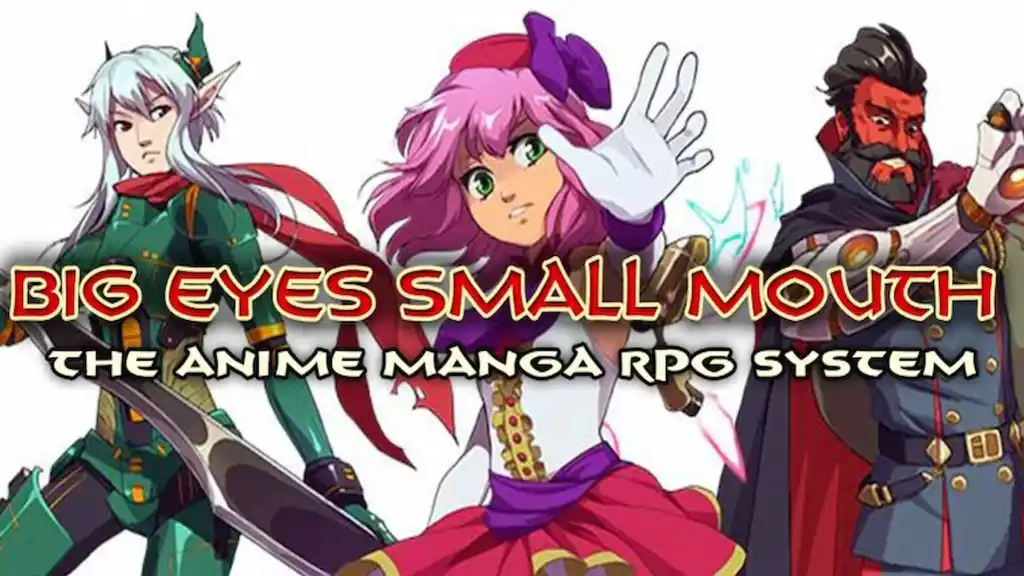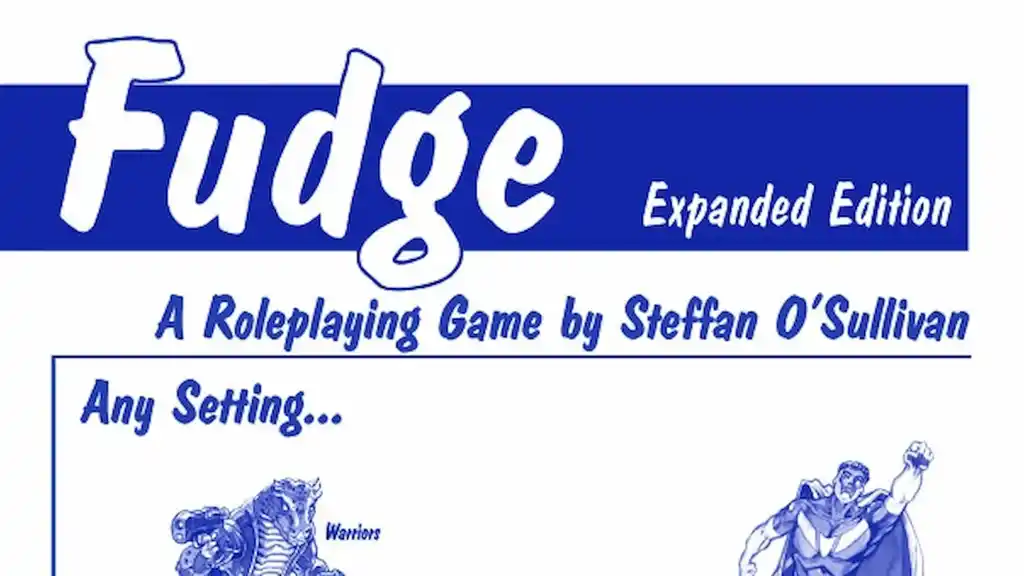Every tabletop RPG fan remembers the 1990s as a turning point, not just for the rise of collectible card games and blockbuster fantasy brands, but for the explosion of weird, brilliant, experimental systems that reshaped how players approached storytelling. Dungeons & Dragons may have been the most well-known, even today, but it wasn’t the only one. This was the era when game shops still smelled like ink and cardboard, when rulebooks felt mysterious, and when discovering a new TTRPG meant stumbling across a hidden gem someone photocopied for the group the night before.
Videos by ComicBook.com
It was a decade defined less by polished mainstream releases and more by bold passion projects that dared to challenge the mold. Yet many of the 1990s’ most inventive role-playing games quietly faded from memory. The spotlight shifted to modern giants, and those once-revolutionary cult classics became footnotes. But their influence never truly disappeared. These games shaped entire genres, inspired today’s designers, and created mechanics that are still used across the tabletop RPG landscape. It’s time to look back at three of the greatest forgotten TTRPGs from the 1990s that have become cult classics.
3) Big Eyes, Small Mouth

Before anime dominated Western pop culture, before streaming platforms turned every genre into a household name, there was Big Eyes, Small Mouth: an audacious little TTRPG that dared to capture the style, tone, and kinetic energy of Japanese animation at a time when few even understood how to translate it into tabletop form. Published in 1997 by Guardians of Order, BESM quickly became the go-to system for players who wanted to run anything from mecha battles to magical girl adventures, from shonen tournament arcs to slice-of-life comedy. Nothing else in the 90s tabletop scene looked like it, felt like it, or played like it.
What made BESM truly remarkable was its sleekness. While many RPGs of the decade leaned heavily into dense rulebooks and complex formulas, BESM emphasized flexibility, narrative freedom, and broad-stroke mechanics powered by its Tri-Stat System. With just Body, Mind, and Soul as core attributes, players could build virtually any character concept they imagined. Want a superpowered android fighter? Easy. A talking cat spirit with cosmic magic? No problem. A transforming hero with an ever-expanding list of abilities? BESM encouraged it.
The game’s point-buy customization system felt revolutionary in the 90s because it placed creative control directly in players’ hands. Instead of restricting concepts to narrow class categories, BESM empowered players to experiment with wild, over-the-top designs that perfectly mirrored anime storytelling. And while later editions added more structure and options, the original remains a beloved cult classic for its charm and simplicity.
Beyond mechanics, BESM’s greatest legacy is how boldly it celebrated anime long before it was mainstream. It invited players to embrace high-energy melodrama, cinematic battles, exaggerated characters, and genre mashups with zero shame. Today, we have countless anime-inspired TTRPGs, but BESM was the pioneer, and it still deserves recognition as one of the most influential and awesome cult RPGs of the 90s.
2) Vampire: The Masquerade

While Vampire: The Masquerade is far from forgotten, what is often overlooked is how monumental it was in the 1990s. At the time, the tabletop RPG landscape was dominated by dungeon crawls, tactical combat, and traditional fantasy tropes. Vampire blew all of that apart. Released in 1991 by White Wolf Publishing, it was more than a game. It pulled TTRPGs out of basements and into nightclubs, goth shops, and college campuses, transforming role-playing into a stylish, introspective, and sometimes dangerously intense social experience.
VTM broke from the norm by prioritizing narrative over numbers. It encouraged players to explore themes like morality, power, desire, and humanity through the lens of gothic-punk vampires struggling to survive in a world where monsters wear tailored suits and political intrigue is deadlier than any stake. Its Storyteller System was designed to support character-driven drama instead of tactical combat, making social maneuvering just as important as supernatural abilities.
In the 90s, nothing else felt like Vampire. Its stark black-and-white aesthetic, its moody prose, and its deeply immersive lore captured players’ imaginations. It inspired its own fashion, music playlists, LARP subculture, and fan communities before fandom was the mainstream idea it is today. If D&D represented the medieval fantasy ideal, Vampire: The Masquerade embodied the counterculture, the shadowy parallel world filled with neon lights, whispered conspiracies, and personal horror.
Mechanically, VTM’s greatest contribution was its emphasis on consequences. Every power came at a cost. Every feeding had moral implications. Every political move risked long-term fallout. Modern TTRPGs that center emotional choices, Blue Rose, Monsterhearts, Kids on Bikes, and Blades in the Dark, owe a debt to Vampire’s design principles. Even video games like Dragon Age and Disco Elysium reflect their narrative DNA.
So while Vampire: The Masquerade is still alive today through games like Bloodlines 2, its 1990s incarnation remains a cult icon. A groundbreaking force that expanded what tabletop storytelling could be. It wasn’t just awesome but transformative.
1) Fudge/Fate

If there is one 1990s TTRPG whose influence is wildly underestimated, it’s Fudge: a free-form, customizable system first released in 1992 that served as the foundation for what would eventually become the modern Fate role-playing system. While Fate later evolved into a polished, award-winning powerhouse, Fudge itself was the spark that set everything in motion, and it was one of the most innovative tabletop RPGs of its decade.
Fudge was unlike any other RPG of the era. Instead of presenting a fixed world, rigid classes, or thick rulebooks, it offered a flexible framework that groups could shape however they wanted. It wasn’t a game with lore but a toolkit with limitless potential. Its famous adjective ladder replaced traditional numerical stats, making character sheets easier to understand and far more tied to narrative expression. Instead of deciding whether a character had Strength 14 or Charisma 11, players and GMs focused on descriptive traits that directly influenced story flow.
This freedom was revolutionary in the 1990s because it encouraged groups to build worlds collaboratively long before the indie RPG boom. Want to run a sci-fi campaign? A noir detective story? A mythic Viking saga? A superhero arc? Fudge made it easy, and more importantly, it made it fun. Its core philosophy, that the rules should support the story, not hinder it, became the backbone of the eventual Fate system, which built on Fudge’s ideas with Aspects, Fate Points, and more structured narrative mechanics.
The real magic of Fudge was its accessibility. It was distributed freely, supported homebrew creativity, and fostered a community that thrived on collaboration rather than competition. It empowered players to experiment, to improvise, and to tell stories on their own terms. Many beloved indie RPGs owe their design DNA to it, whether directly or spiritually. Calling Fudge the most important cult TTRPG of the 1990s isn’t an exaggeration. It helped redefine modern tabletop design by showing that rules can be light, flexible, and story-first without losing depth.
What do you think? Leave a comment below and join the conversation now in the ComicBook Forum!








